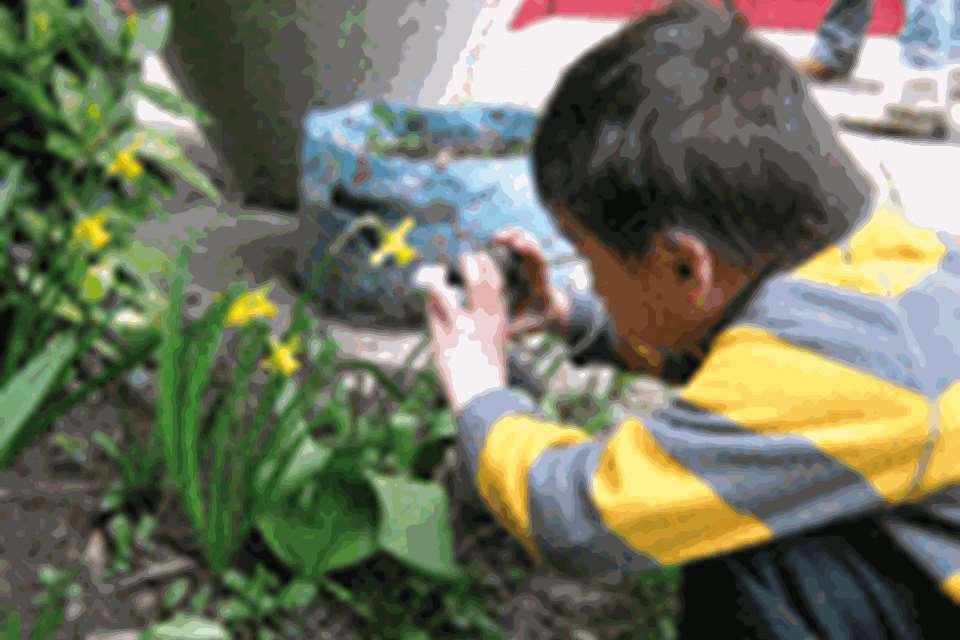EYFS Activities: We’ve explored… photography
Annette Rawstrone
Monday, May 15, 2017
How one childminder turned the children at her setting into budding photographers. By Annette Rawstrone

Today’s technology means that even very young children can use a digital camera or iPad to point, press and capture an image or, more likely, a series of images. Most early years children have access to photographic equipment, but do they also have the skills and support to use it properly?
Attending the Rich Potential of Children’s Photography seminar delivered by Marc Faulder (see box) at the Nursery World Show in London earlier this year inspired childminder Chloe Webster to review her practice. She decided to plan a half-term photography project with the children at Pebbles Childcare in Worthing, West Sussex and introduce them to the basics of photography – how to focus on an object, take the photo, look at the images and delete unwanted ones.
‘Previously children had access to a camera and would point and press. Often they’d end up with multiple blurry pictures of their foot and we wouldn’t actively look at the photos the children had taken,’ she says. ‘Now the children think about what image they’d like to take, ensure the camera is in focus and review the pictures to choose the best one rather than just tap away.’
MASTERING SKILLS
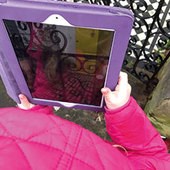 Ms Webster showed the school-age children how to hold an iPad securely when taking photos – fingers on the back, thumbs on the front – and hold it steady, waiting for the square on the screen to disappear, indicating that it is in focus, before taking the image. They discussed the composition of a picture and how they can move closer to an object to get more detail, or move away from it to get more in the photo.
Ms Webster showed the school-age children how to hold an iPad securely when taking photos – fingers on the back, thumbs on the front – and hold it steady, waiting for the square on the screen to disappear, indicating that it is in focus, before taking the image. They discussed the composition of a picture and how they can move closer to an object to get more detail, or move away from it to get more in the photo.
She also demonstrated how to look at photographs after they are taken and how to delete all but the images they are most happy with. Once the children had mastered these skills, Ms Webster tasked them with the theme of ‘Pets, People and Patterns’, and the children led a photography walk through their local town, stopping to photograph things of interest.
‘It was incredible; I’ve never seen them so engaged,’ says Ms Webster. ‘I think this is because they had ownership. They knew how to use the technology and then had the freedom to use it how they saw fit. They looked carefully for things to photograph and found lovely patterns in cobbled walls and tiled floors. We also took our puppy for a walk and they asked other dog owners if they could photograph their pets.’
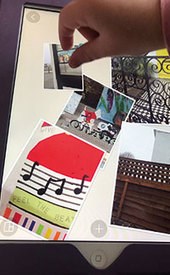 Once the children were happy that they had captured enough material, they returned to the setting to review their photos, select the five that they liked the best and delete the others. Ms Webster then introduced them to the PicCollage app so that they could collate their photographs into a collage – using their fine motor skills to size and resize, move and decorate their photos by themselves.
Once the children were happy that they had captured enough material, they returned to the setting to review their photos, select the five that they liked the best and delete the others. Ms Webster then introduced them to the PicCollage app so that they could collate their photographs into a collage – using their fine motor skills to size and resize, move and decorate their photos by themselves.
In order to show the children that their work is respected and valued, Ms Webster sent the finished collages to the printers to be blown up and professionally printed.
While the children waited for the finished prints, they set up a gallery to display their digital artwork. They each wrote a short piece explaining why they had chosen the particular images for their photo collage and decorated photo frames in which to display the printed work.
‘I didn’t want the project to be just about ICT, but to incorporate all the areas of learning,’ explains Ms Webster. ‘The children’s sense of achievement when the gallery was completed was incredible. They were so excited to show their parents, who were amazed that it was all their children’s own work.’
ATTENTION TO DETAIL
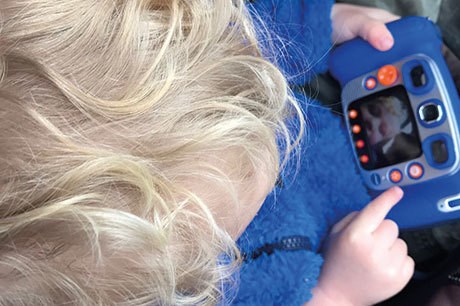
Following the success of the photography project, Ms Webster adapted it for the younger children in her care. She showed the under-threes how to use a VTech camera and asked them to photograph on the theme ‘Things I Like’.
‘It was truly remarkable to see how quickly the children picked up the functions of the camera and understood the task,’ she says. ‘Now they can say why they are taking a photo and focus on specific things such as a flower. Before we spoke about taking photos, they would run up to things and press the button, but now they will carefully move the camera in order to get the picture they want – point it up to photograph branches or take it up close to photograph the bark. These are new skills. We’ve moved the onus from using simple equipment to using it effectively,’ says Ms Webster.
‘The young children’s attention to detail surprised me and taught me a lot about them. They showed me skills that they’d not had the opportunity to demonstrate before. A boy who has recently turned two photographed a lot of flowers and even picked them and placed them on objects in order to make different images. He worked out how to take a photo of another person and then press a button to flip the viewfinder and take an image of himself.’
By being shown the basic skills, the children could then independently hone their skills through trial and error and learning from each other. Ms Webster feels that the photography project helped to bring the children’s learning to life and gave them a whole new sense of independence and focus.
‘They took so much pride in not only taking their photos, but presenting them too,’ she says
Pebbles Childcare is introducing beach school sessions, and had intended creating a Beach Story for each child, similar to a Learning Journey, but now Ms Webster will be encouraging the children to independently photograph and collate their own experiences.
Books based on the children’s projects are at http://onreflectionpublishing.co.uk
ONE BEST PHOTO
‘So many times teachers open their iPad camera roll and see dozens of selfies or repeats of the same image. Now when I hold photography sessions with our four- and five-year-olds, I show them some basic skills,’ says Marc Faulder, early years teacher at Burton Joyce Primary School in Nottingham and an Apple Distinguished Educator.
‘For the past three years I’ve taken my class to Sherwood Pines in Nottinghamshire for photography sessions and I’ve developed a lesson resource pack in partnership with The Forestry Commission. It’s designed to teach children photo etiquette and provide them with the skills needed to be real digital artists.
‘One Best Photo is free to download from iTunes and enables children to use photography to explore the relationship between people, wildlife and timber. It contains all of the teaching points and plans you need to run this activity, including maps of the forest, objectives for early years and Key Stage 1, as well as examples of children’s work to share with your class. The resources can be used at any Forestry Commission site or to inspire photography sessions elsewhere.
‘Our children use a free app called Pic Collage to take their photographs and organise them on their iPad. We have also set up a One Best Photo gallery area where children can review each other’s work and make comments on People, Wildlife and Timber, as well as the photography skills of the artist.’
Download One Best Photo at:
https://itunes.apple.com/gb/course/one-best-photo/id1116393315
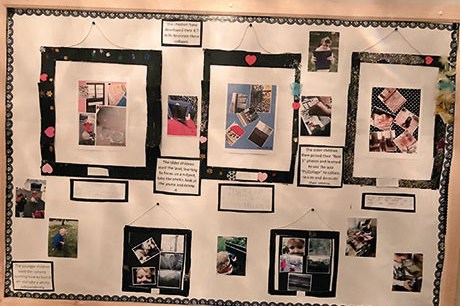
PHOTOGRAPHY TIPS
Show children how to hold the camera straight and steady and focus on the subject.
Find a point of interest to focus on.
Take photographs from different perspectives – such as pointing the camera up high or down low; get in close or step back for a wider image and move around the object to take photos from different sides.
Encourage children to take lots of images and then show them how to review their photos and how to delete those they are unhappy with.
Think about variety and take photos of objects, buildings, landscapes and portraits.
Above all, let the children experiment and have fun – let the children tell their stories through photography while you teach the technology skills.
More information
The Kids’ Guide to Digital Photographyby Jenni Bidner teaches young photographers how to create, edit and share their digital images in imaginative ways, from using basic features like the zoom and flash to changing colour, removing red eye and using the finished photos in cool projects.
Guide to Photographyby National Geographic Kids is a fun, fact-filled guide with all the essentials for budding photographers.


